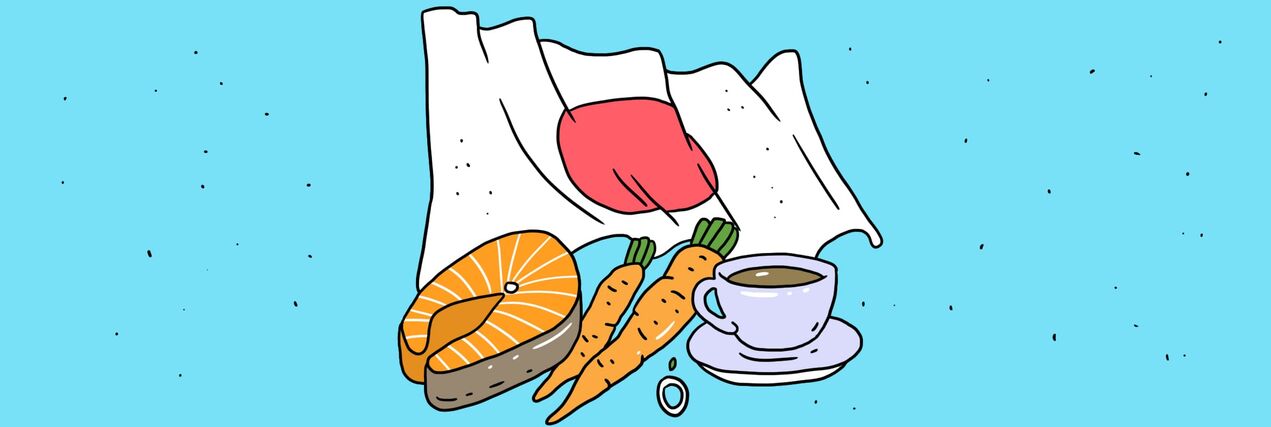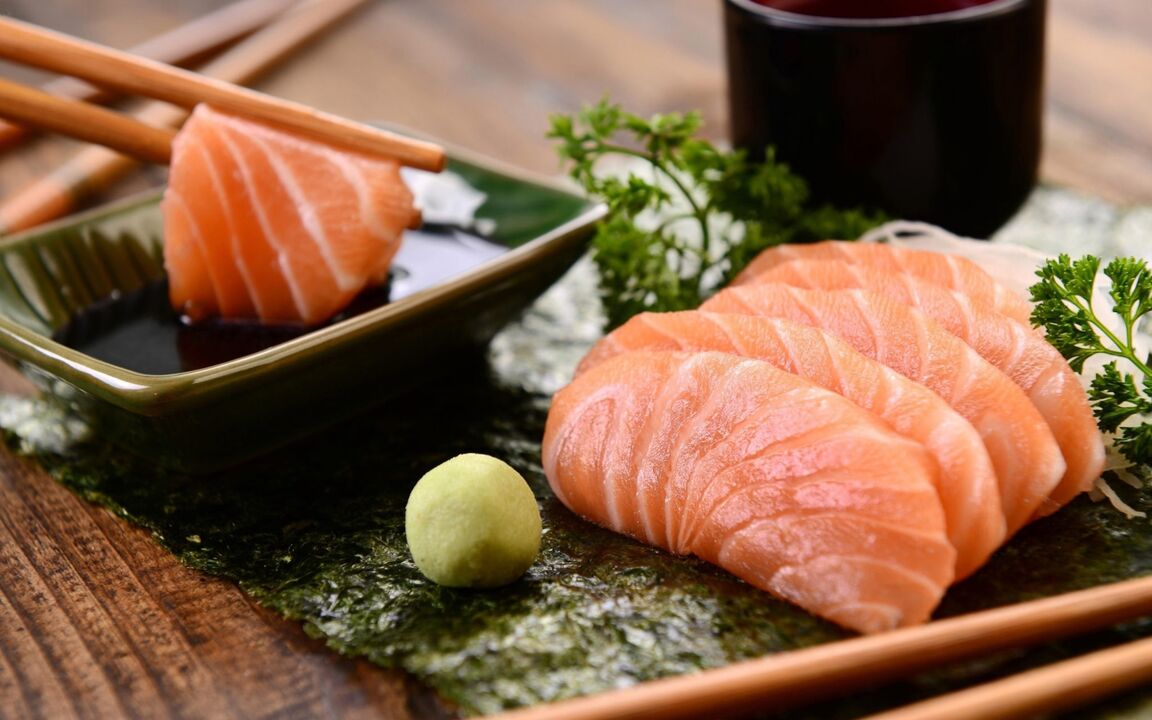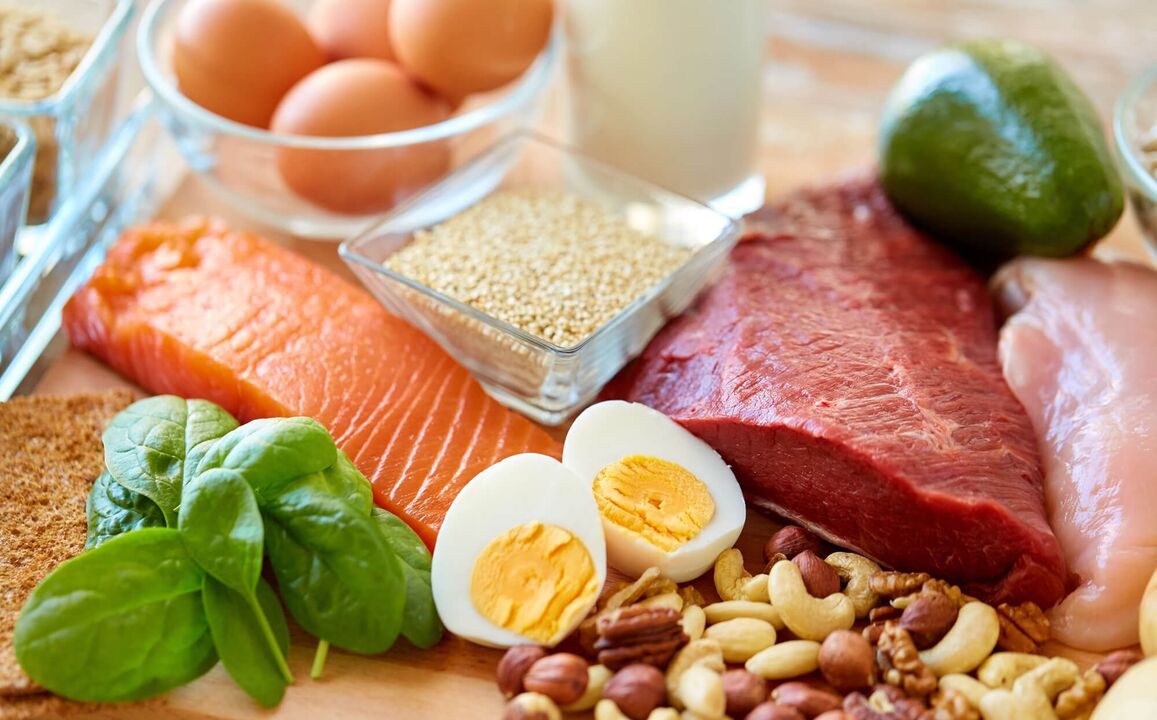
The Japanese have a slim body, live a long life, and keep a healthy appearance, good memory and energy until old age. So is the Japanese diet the secret to health and longevity? Things are not so rosy: we figure it out together.

History of the Japanese Diet
Lose 7-8 kg in 14 days: That's what the Japanese diet promises. Honestly, there is a very indirect relationship to Japanese cuisine and the food system. In any case, its observance required the iron will of the samurai.
There is no traditional Japanese seafood in the diet, only fish. It consists of a large amount of unsweetened coffee, which is not a very common way of serving the drink in Japan. It is encouraged to cook food that is not only salt-free, but also spice-free, something the Japanese are not used to seeing.
The traditional Japanese food system actually has many advantages:
- One study has shown that a grain- and vegetable-based diet with small amounts of soy and animal products reduces the likelihood of dying from a heart attack or stroke.
- Japan has the lowest obesity index in the world.
- Okinawa, in southern Japan, has the largest population of people over the age of 100 in the world.
- Japanese food, especially Okinawa, is rich in antioxidants and flavonoids from vegetables and fruits of different colors and plant estrogens, which help prevent the development of hormone-dependent cancers (such asbreast cancer).
- Japanese rituals related to presentation and aesthetics in the presentation of food and drink are as good for physical and mental health as other healthy dietary habits, the MediterraneanHai - eat fresh, share meals with family, eat lots of fruit and fish, allow fun, enjoy the food.
But the traditional Japanese diet has a similar relationship with the two-week weight loss diet known as the "Japanese diet" as a roller coaster ride to America.
Principles of the Japanese diet
The Japanese diet is very strict and does not allow any deviation. The main principle of its action is a gradual restructuring of the attitude towards nutrition in general and a reduction in the total calorie content of the diet. Light protein becomes the basis of the menu, and carbohydrates are reduced. The fiber in fruits and vegetables helps you feel full.
It is claimed that this diet helps to rebuild and normalize digestion and metabolism, but there is no scientific evidence for this. However, giving up sugar, salt, baked goods and alcohol changes the body and brain. But the important thing is that the rejection is permanent, 14 days is not enough. And reducing portion sizes actually returns a largely distended stomach back to normal. But it does not decrease: this elastic organ cannot contract to a state less than physiological.
The Japanese diet allows only 3 meals, 4, 5–5 hours before bedtime, the last meal should be scheduled. Snacking is not acceptable, it can be a difficult test: physiologically, a person feels hungry every 3-4 hours and small meals provide himI have more energy than three meals a day.
During the day, according to the Japanese diet, you need to drink at least two liters of water. Vegetable oils should be kept to a minimum. A cup of green tea is the only refreshment for hunger.
Nutritionists warn: it's better to prepare for any diet in advance, and you should start off smoothly to minimize the inevitable stress. For 2-5 days, reduce your diet as much as possible. You can even buy Japanese chopsticks to eat slower and more thoughtfully. Try to drink and sleep more, stress less.

List of prohibited foods in the Japanese diet
- Salt, because it slows down the removal of fluid from the body and raises blood pressure.
- Sugar, because it is a simple carbohydrate source, is quickly accumulated in the body as excess weight.
- Alcohol in any form and quantity, as it slows down the metabolism and prevents the elimination of toxins from the body.
- Bread made from flour.
- Semi-finished products, fast food, any sweet desserts and full-fat dairy products.
Food allowed in the Japanese diet
The nutritional basis of the Japanese diet is vegetables and fruits (except sweet bananas, figs, grapes), cheese, kefir, fish and meat, and eggs. Meat and fish can be fried in vegetable oil. You can choose sunflower, olive, corn, and sesame oils - those that help withstand the strict restrictions.
Protein is the main dietary nutrient, and this has something in common in the Japanese diet with other high-protein diets like the keto diet and the paleo diet in its pros and cons. their points. Fiber is the second most important nutrient for satiety. It is found in grains, vegetables, and fruits.
All desserts are forbidden in the Japanese diet. The sweetest food in the diet is fruit.
| May | It's forbidden |
|---|---|
|
|
Sample menu for 14 days
Breakfast.Almost all 14 days of Japanese breakfast should only drink one cup of black coffee without sugar. It can sometimes be supplemented with crackers or replaced with green tea. Organic coffee is a staple of the Japanese diet because it contains beneficial natural antioxidants.
Dinner.For lunch, you can have lean fish, chicken or meat with vegetables. You can make a salad from fresh vegetables, stir-fry vegetables with the main dish or eat a salad from grated carrots, chopped cabbage, and cucumbers. There are no calorie restrictions, but you do need a small portion.
Dinneris the most varied part of the Japanese diet. You can eat fruit, hard-boiled eggs, kefir, hard cheeses. If desired, the Japanese diet allows you to eat fish or meat with vegetables for dinner, as well as for lunch, but the portions should be smaller.
| The first day |
|
| The second day |
|
| The third day |
|
| The forth day |
|
| Thursday |
|
| The sixth day |
|
| Saturday |
|
| The eighth day |
|
| Ninth day |
|
| tenth day |
|
| Eleventh day |
|
| Twelfth day |
|
| Thirteenth day |
|
| fourteenth |
|

Followers' feedback
- "I always lose weight, my height is 167 cm, and the minimum weight is 56, the maximum is 73 after giving birth. So I tried a lot of diets: Dukan, Protasov, etc. Japanis the most effective, on which I lost 5-7 kg. Used 4 times.
- "Well, I can say that the results of the diet, of course, satisfy me a little. I actually lost weight, it can be seen both in the clothes and in the comments of other people. But I didn't want to repeat this experience. Once again I was convinced that there was nothing good in a strict diet. And as soon as I started following a more or less familiar regimen, the weight came on. gradually increased.
- "This diet has helped me lose weight and start making changes, but I cannot recommend it to anyone, because any diet puts a lot of stress on the body and can lead tosad consequences, it's better to listen to your body and change your attitude to food. "
- "The most important and valuable impact for me is that I don't want to eat sweets and all those nasty things like chips, crackers and so on, but I've always loved it! I also love that Ibegin to feel the taste of food very clearly, feel more interested in food.
- "They say that this diet was developed in a clinic in Japan, the name of this diet is different in different sources. It is also suggested that there is no Japanese diet. and the name was invented simply for the purpose of advertising to attract attention. Indeed, among the Japanese you rarely meet a person who is well fed, we have also heard a lot. much about the longevity of the Japanese. Conclusion: we trust the Japanese. "
Efficacy and benefits of the Japanese diet
Avoiding sugar and alcohol are probably the only healthy ideas in the Japanese diet. Even salt should not be completely eliminated.
Many people note that the diet actually helps with weight loss by restricting calories and, more importantly, by changing taste preferences and falling out of love with certain unhealthy foods. But it is difficult to speak of a change in internal processes: no serious studies have been done, only subjective impressions.
The diet is clearly contraindicated in children, pregnant women, lactating women, people with stomach inflammation and ulcers, heart disease, eating disorders and other chronic diseases. You should consult your doctor before starting a diet.

The harmful effects of the Japanese diet
The harms are the same as with other fad diets: cutting too many calories can put stress on the body and vitamin deficiencies. High protein content increases the load on the liver and kidneys.
In addition, nutritionists and people who are losing weight note the following difficulties:
- Coffee with minimal addition for breakfast will not be appreciated by everyone. As for stomach problems, this is accompanied by bloating and heartburn. Breakfast will give you energy for the day and a good mood, not make you daydream about lunch.
- Dry foods are free of salt, seasonings, oils and sauces. It is difficult for the body to eat this dish, eating without feeling of pleasure leads to a decrease in the ability to absorb nutrients.
- Prohibited and restricted foods. To avoid loose stools, you need to have an iron will, and weight gain after the end of the diet is almost inevitable.
- Sports are not compatible. Acting on an empty stomach is not a good idea, and being in a bad mood won't help you regulate activity.































